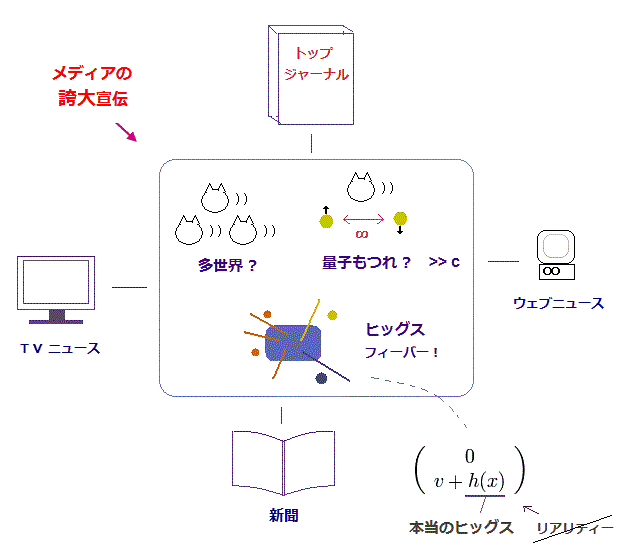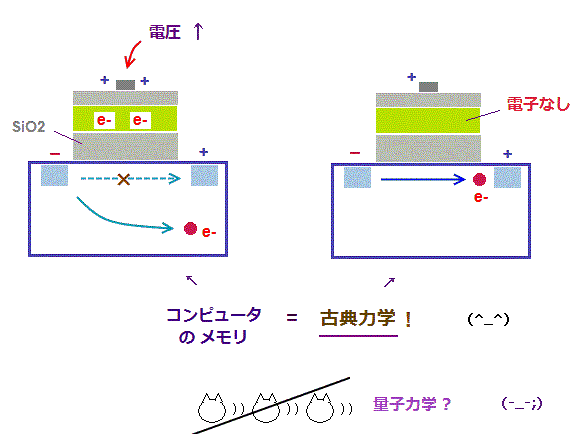
Home page
Einstein is wrong
Ehrenfest paradox
(Fig.1) Two accelerating rockets at the same speed keep the constant length of the rope between them or break the rope, depending on observers ? ← paradox

In Fig.1, two spaceships or rockets start to accelerate at the same time, same speed to the velocity v, maintaining the rope of the constant distance L between them ( this-2nd-paragraph ).
But according to the paradoxical Lorentz length contraction, when seen by an observer K' moving at the same velocity v as two rockets (= rest frame of rockets ), the rope length is elongated (= longer than the moving rope length seen by K ), so the same rope is broken ( this-p.8-conclusion, this p.6, this p.1-left-last-paragraph ).
This is called Bell's spaceship paradox disproving Einstein relativity.
The rope between two rockets paradoxically snaps and doesn't (= rope's length between two rockets is constant, elongated and contracted ) depending on observers' motion.
In the unrealistic Einstein relativistic Lorentz length contraction, the rigid body is contracted or elongated just when it starts to move or it is seen by differently-moving observers, even when No strong force is applied to the rigid body.
(Fig.2) Two plates (= one is electrically positive, the other is negative ) start to be accelerated at the same speed v. = distance between two plates is unchanged or not (= electric energy potential changed or not ) is paradoxical seen by K and K'

In Fig.2, two electrically-charged plates (= one plate is positive, the other is negative ) start to be accelerated to the velocity v at the same time, same speed, maintaining the constant distance L between them, as seen by the stationary observer K.
↑ Only small kinetic energy is needed to accelerate these two plates.
But as seen by an observer K' moving at the same speed as these plates (= rest frame of plates ), the distance between two plates paradoxically appears to be elongated due to inverse Lorentz length contraction (= moving objects become shorter ).
This is clearly paradox, because as seen by K', separating these two plates needs very large force or large energy overcoming strong Coulomb attraction between two plates, as shown in Fig.2-right (= force Fx in moving direction does not change, = the force keeping a rigid body's shape remains strong, this p.15 ).
Just giving very small kinetic energy to two plates (= seen by K ) can paradoxically generate much larger force or larger energy separating two plates attracting each other by very large Coulomb force (= seen by K' ).
Basically, Lorentz length contraction of a rigid object violates energy conservation (= the rigid object's length is paradoxically changed or unchanged, depending on observers = changing the rigid body's length needs unrealistically large energy ).
In Fig.2-left, they give only kinetic energy, No potential energy to change the shape of a rigid body, which contradcts the same rigid body elongated seen by K' moving with the rigid body (= total energy is Not conserved, because kinetic energy given is Not equal to the rigid body's potential energy or electric energy change, as seen in material's specific strength where a lighter carbon nanotube is much robust, which needs more potential energy to change its shape, than a heavier less-robust material which needs more kinetic energy to move ).
General relativistic acceleration frame (= called Rindler coordinate ) unrealistically expands the rigid object as seen by an observer K' moving with the object, when the length of the same rigid object is unchanged seen by K (= the object is moving relative to K, this p.4-upper ).
(Fig.3) Total momentum conservation = a lighter electron being accelerated toward a heavier nucleus is not satisfied in the unrealistic accelerated (stationary) electron frame where a heavier nucleus is paradoxically accelerated.

In Einstein relativity, there is No absolute frame where which clocks are moving, running slower is uncertain, paradoxical (= this paradoxical moving clock time dilation applies also to accelerated frames = only relative frames, No absolute frame ).
In Fig.3, a lighter electron (= e- ) is pulled, accelerated toward a heavier nucleus (= +Ze ) by Coulomb attractive force.
↑ To conserve total momentum (= mass × velocity ), a lighter electron's velocity must be faster than a heavier nucleus (= when the attraction changes the heavier nuclear momentum by Mv where M,v are nuclear mass and velocity, the lighter electron's velocity is changed by -Mv/m where m is electron's lighter mass, which electron's velocity change is far larger than the heavier's nuclear velocity change to conserve total momentum summing a nucleus and an electon = 0 ).
But as seen by the lighter electron (= the accelerating electron's rest frame ), the heavier nucleus appears to be paradoxically accelerated, moving faster, which clearly disobeys the total momentum conservation law.
To conserve total momentum conservation law and solve relativistic paradoxes, we have to determine only one absolute frame at rest relative to the center of mass of the whole universe. which disproves Einstein relativity with No absolute frame.
Michelson-Morley experiment and Sagnac effect can be explained only by the light medium moving with (= dragged by ) the earth (= but the medium unfixed to the earth's spinning ) in the whole absolute frame.

Feel free to link to this site.